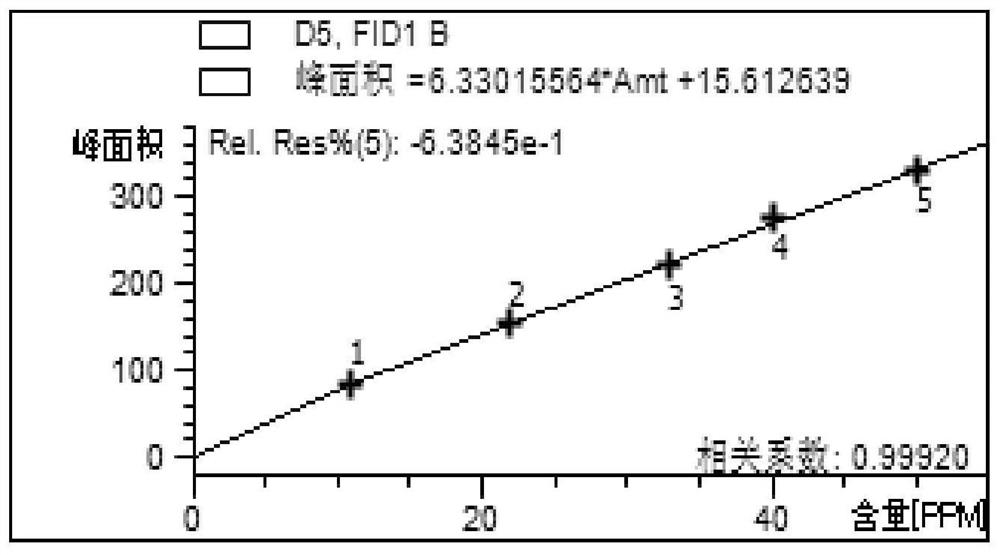Method for determining content of residual methylsiloxane in organosilicon softener by using HS-GC external standard method
A technology of silicone softener and methyl siloxane, applied in the field of analytical chemistry, can solve problems such as damage, complicated operation process, carcinogenicity, etc., and achieve the effect of shortening analysis time, simple and safe method, and high precision
- Summary
- Abstract
- Description
- Claims
- Application Information
AI Technical Summary
Problems solved by technology
Method used
Image
Examples
Embodiment 1
[0036] 1. Instrument preparation:
[0037] Adopt Agilent 7890B gas chromatograph, 7697A headspace sampler for headspace injection, equilibrate at 130°C for 30min; the chromatographic column is DB-1701 (or a chromatographic column with equivalent polarity), the column length is 30m, and the inner diameter of the column is 320μm. The initial column temperature is 100°C, keep it for 2min, then increase the temperature to 260°C at a rate of 10°C / min, keep it for 10min, the carrier gas flow rate is 3mL / min; 251, the injection volume is 20μL; the hydrogen flame detector detects its temperature at 260°C, the hydrogen flow rate is 30mL / min, and the air flow rate is 300mL / min.
[0038] 2. Drawing of standard curve
[0039] Prepare standard solutions: Accurately weigh 50 mg of D3, D4, D5, and D6 standard products in beakers, dilute with n-hexane, transfer to a 500mL volumetric flask, adjust the volume of n-hexane to the mark, and prepare 100 mg / L for storage Liquid VI; then accurately...
PUM
 Login to View More
Login to View More Abstract
Description
Claims
Application Information
 Login to View More
Login to View More - R&D
- Intellectual Property
- Life Sciences
- Materials
- Tech Scout
- Unparalleled Data Quality
- Higher Quality Content
- 60% Fewer Hallucinations
Browse by: Latest US Patents, China's latest patents, Technical Efficacy Thesaurus, Application Domain, Technology Topic, Popular Technical Reports.
© 2025 PatSnap. All rights reserved.Legal|Privacy policy|Modern Slavery Act Transparency Statement|Sitemap|About US| Contact US: help@patsnap.com



